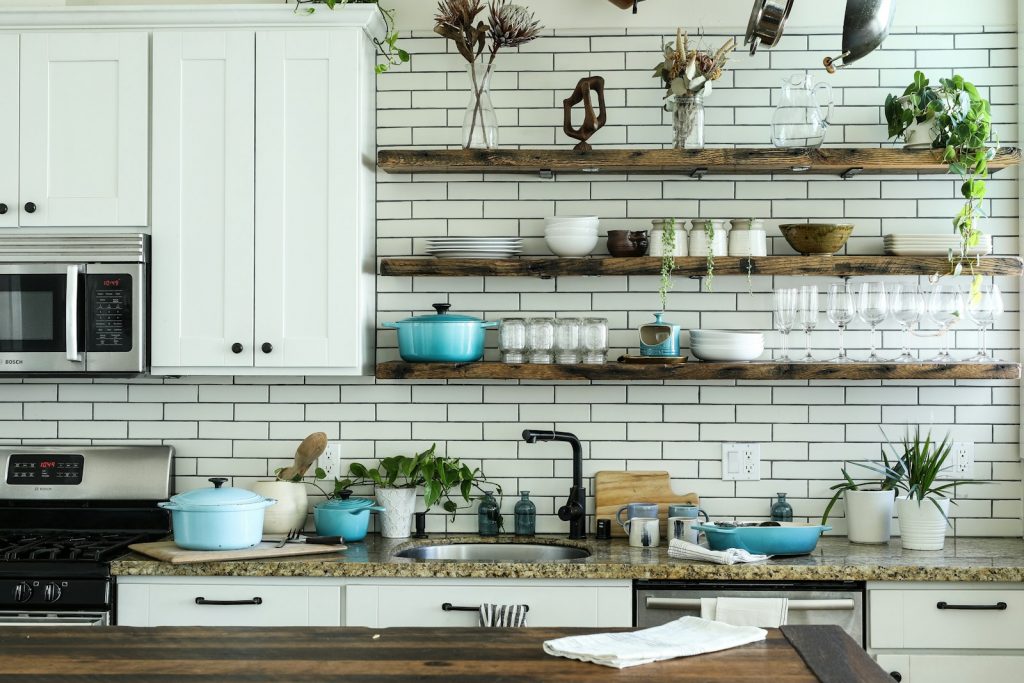Introduction to Eco-Friendly Home Design
Eco-friendly home design has shifted from niche to necessity as the push for sustainability intensifies due to pressing environmental challenges. The construction and renovation of homes account for significant carbon emissions, making sustainable practices critical in mitigating climate change impacts. Utilizing sustainable materials, energy-efficient appliances, and smart home technologies can greatly reduce a home’s ecological footprint, fostering a healthier environment [Source: Builder Magazine].
Implementing smart design principles not only lowers energy consumption but also enhances the quality of living spaces. Features such as passive solar heating, green roofs, and efficient insulation contribute to reduced reliance on fossil fuels. Furthermore, adopting practices like using drought-resistant landscaping or installing rainwater harvesting systems supports biodiversity and conserves invaluable water resources, aligning with sustainable living trends and enhancing property value [Source: The Hindu Business Line].
The shift towards eco-friendly practices also promotes healthier indoor environments. Homes designed with natural materials often show lower levels of indoor pollutants, providing better air quality. The integration of plants within living spaces is another trend gaining traction, as biophilic design not only beautifies but also contributes to well-being [Source: Forbes]. To explore more practical steps toward creating an eco-friendly home, visit our guides on making your home truly eco-friendly and embracing eco-friendly living.
Choosing Sustainable Materials
Choosing sustainable materials is crucial for reducing the environmental impact of our homes and products. Sustainable materials contribute to a healthier planet by using resources more efficiently, minimizing waste, and lowering carbon footprints. Opting for recycled materials not only helps reduce demand for raw materials but also conserves energy; for instance, recycling aluminum saves 90% of the energy required to produce the same amount of new aluminum from ore [Source: BDC Network].
Reclaimed materials, like wood salvaged from old buildings, provide unique aesthetics while diverting waste from landfills. Reclaimed wood can add character and history to new projects, and its use helps preserve forests and ecosystems [Source: Construction Dive]. Additionally, biodegradable products, such as those made from natural materials (e.g., bamboo or compostable plastics), break down more easily in the environment, reducing long-term pollution and environmental stress.
Incorporating these sustainable options into home design and renovation not only supports eco-friendly practices but also appeals to increasingly environmentally conscious consumers. For further insights on creating an eco-friendly home, refer to our guides on eco-friendly living habits and sustainable kitchen practices.
Maximizing Energy Efficiency
To significantly reduce energy consumption in your home, consider implementing various energy-efficient solutions that encompass insulation techniques, energy-efficient windows, and smart home technologies.
Insulation Techniques
Insulation is crucial for maintaining a comfortable home while reducing energy costs. Effective insulation can include materials like fiberglass, spray foam, or cellulose, which work to minimize heat loss in colder months and keep your home cool during summer. In fact, proper insulation can reduce the energy required for heating and cooling by up to 20% [Source: NPR]. Moreover, utilizing techniques such as adding insulation to your attic, sealing gaps, or using radiant barriers can further enhance efficiency.
Energy-Efficient Windows
Upgrading to energy-efficient windows can make a significant difference in reducing heating and cooling costs. These windows typically feature double or triple glazing, low emissivity (low-E) coatings, and gas fills to minimize heat transfer. According to a study, energy-efficient windows can save homeowners approximately 12-25% on heating and cooling costs [Source: CleanTechnica]. Replacing old single-pane windows with energy-efficient alternatives not only lowers energy bills but also enhances indoor comfort.
Smart Home Technologies
Integrating smart home technologies can dramatically increase your home’s energy efficiency. Smart thermostats allow for customized heating and cooling schedules, adapting to your lifestyle and significantly lowering energy use when you are away from home [Source: CNET]. Additionally, smart lighting systems and energy monitoring devices can help identify high-energy usage patterns, enabling you to make adjustments and save on your electricity bill.
By combining these techniques, you can create a more energy-efficient home that reduces costs and minimizes your environmental impact. For more tips on eco-friendly living, explore our articles on sustainable living and saving energy in your kitchen.
Incorporating Renewable Energy Solutions
Incorporating renewable energy solutions in your home can significantly reduce your carbon footprint and promote sustainable living. Here are three effective options to consider:
1. Solar Panels
Solar energy is one of the most accessible and popular forms of renewable energy for homeowners. By installing solar panels, your home can harness sunlight to generate electricity, significantly lowering your utility bills. The federal Residential Clean Energy Credit currently allows a tax break of 30% on the cost of installing solar panels, making this a financially viable option for many homeowners [Source: CleanTechnica]. Additionally, with regenerative advances in solar technology, efficiency rates continue to increase, making solar installations a reliable energy source.
2. Wind Turbines
For those in areas with consistent wind patterns, residential wind turbines are a great alternative. These turbines can generate substantial energy, especially when paired with solar systems to create a hybrid renewable energy solution. Studies show that harnessing wind power can lower household energy costs and contribute to a clean energy market, further reducing reliance on fossil fuels [Source: CleanTechnica].
3. Geothermal Heating
Geothermal systems use the Earth’s constant underground temperature to heat (and cool) homes efficiently. This technology captures thermal energy via ground loops installed below the surface and is one of the most energy-efficient heating and cooling methods available. By reducing reliance on traditional heating systems, geothermal heating not only saves money on energy bills but also decreases greenhouse gas emissions [Source: Utility Dive].
Incorporating these renewable energy solutions can transform your home into a bastion of sustainability, aligning with eco-friendly living practices. For more information on creating an eco-friendly household, check out our guide on what makes a household truly eco-friendly here.
Creating a Sustainable Landscape
Creating a sustainable landscape involves several key principles that focus on environmental harmony and aesthetic appeal. One foundational aspect is the selection of native plants. Native species are adapted to the local climate and soil conditions, requiring less water and maintenance than non-native plants. They also support local wildlife, including pollinators, which are crucial for ecosystem health [Source: Edie].
Water management strategies are essential in designing a sustainable landscape. Techniques such as rain gardens or permeable pavements help control runoff and improve local water quality. Drought-tolerant landscaping is becoming increasingly popular, with 62% of experts highlighting it as a significant trend. This approach not only conserves water but also lowers maintenance costs [Source: Builder Magazine]. Installing smart irrigation systems can ensure that plants receive the right amount of water at the right time, further optimizing resource use.
Outdoor living spaces should also be designed with sustainability in mind. Creating areas that seamlessly blend indoor and outdoor environments enhances the usability of these spaces without compromising on natural aesthetics. Features like natural materials, earthy tones, and integrated landscaping elements can create a pleasing venue for relaxation or entertainment while promoting ecological balance [Source: Builder Magazine].
By prioritizing native plants, effective water management, and sustainable design elements in outdoor living areas, homeowners can create beautiful and functional landscapes that contribute positively to the environment. For more insights on eco-friendly practices, explore our articles on sustainable living and water conservation.
Sources
- BDC Network – How to Drive Sustainability in Material Selection
- Builder Magazine – 10 Trends for Outdoor Living Spaces
- Construction Dive – Manhattan Construction’s New Atlanta Office
- CNET – What is a Smart Home: My Straightforward 3-Part Explanation
- CleanTechnica – How Cuts to the Inflation Reduction Act Will Hurt Everyday Americans
- CleanTechnica – Offshore Wind Powers Big Benefits
- Edie – Landscape Cities: Why Flourishing Nature is Essential in Urban Spaces
- Forbes – Three Major Trends are Shaping this Summer Travel Season
- The Hindu Business Line – A Resilient Environment is Key to Sustainable Agriculture
- NPR – Homes Energy Tips: Heating & Air Conditioning
- Utility Dive – Senate Budget Bill Clean Energy Tax Credits Hydro Geothermal


